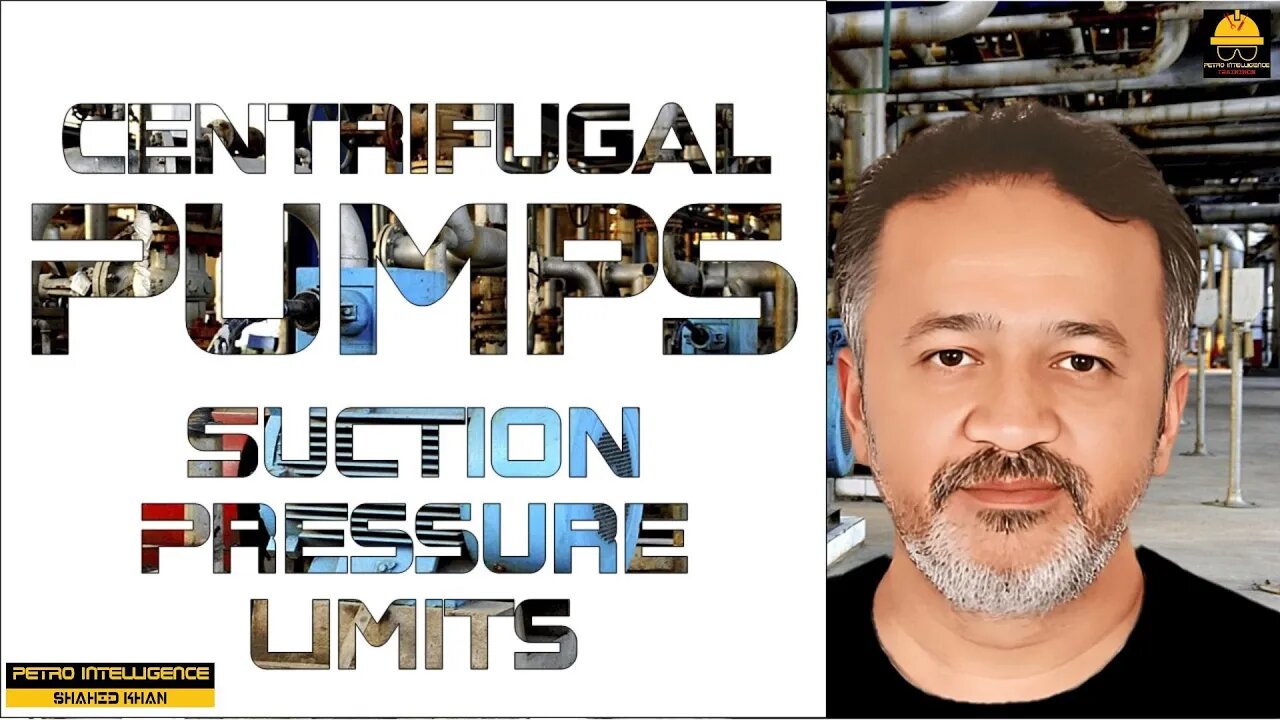Premium Only Content

Suction Limits in Centrifugal Pumps: Understanding the Critical Factors
The chemical processing industry is composed of refineries and plants for petrochemical, paper and pulp, power generation, and food processing. Process technicians inspect and maintain equipment, place and remove equipment from service, complete checklists, control documentation, respond to emergencies, and troubleshoot system problems.
Suction Limits in Centrifugal Pumps: Understanding the Critical Factors:
Centrifugal pumps have specific suction limits that must be considered to ensure their efficient and reliable operation. These limits are primarily related to the pump's ability to draw fluid into the impeller and create the necessary pressure differential. Understanding and managing these suction limits is crucial for maintaining pump performance. Here are the key factors associated with centrifugal pump suction limits:
NPSH Available (NPSHA): Net Positive Suction Head Available (NPSHA) is a critical parameter that represents the total head or pressure at the pump's suction inlet. NPSHA takes into account the pressure of the fluid, the atmospheric pressure, and any additional pressure from the system. It must be higher than the Net Positive Suction Head Required (NPSHR) of the pump to prevent cavitation.
Cavitation: Cavitation occurs when the pressure at the pump's suction inlet falls below the vapor pressure of the fluid, causing the formation of vapor bubbles. When these bubbles collapse, they create shock waves and can damage the impeller and other pump components. To prevent cavitation, NPSHA must be greater than NPSHR.
Inlet Velocity: The velocity of the fluid entering the pump's suction inlet should be managed within acceptable limits. High inlet velocities can result in increased friction losses, turbulence, and can reduce pump efficiency. To control inlet velocity, inlet pipe design and size may need to be adjusted.
Suction Lift: Suction lift refers to the vertical distance between the fluid source and the pump's suction inlet. Pumps can handle only a limited suction lift, and this limit is dependent on the specific design and conditions of the pump. Suction lifts that exceed this limit can lead to insufficient NPSHA and potential cavitation.
Suction Line Design: Proper design of the suction line is essential. This includes considerations for the size and length of the suction pipe, the number of bends and restrictions, and the type of fittings used. Any restrictions or inadequacies in the suction line can reduce NPSHA and hinder pump performance.
Suction Strainer and Filters: The use of suction strainers or filters can introduce additional restrictions that affect NPSHA. It's important to ensure that these components do not impede the flow of fluid into the pump.
Fluid Properties: The properties of the fluid being pumped, such as temperature and viscosity, can influence the pump's ability to create sufficient NPSHA. Viscous fluids may require special considerations to prevent cavitation.
Altitude: Altitude has an impact on atmospheric pressure, which in turn affects NPSHA. Pumps operating at high altitudes may require adjustments to account for lower atmospheric pressure.
Managing and understanding these suction limits is crucial for maintaining the reliability and efficiency of centrifugal pumps. Proper design, regular maintenance, and monitoring of NPSHA, as well as system conditions, are essential to prevent cavitation and other issues related to insufficient suction capabilities. Overcoming these suction limitations is often achieved through system design improvements, the use of NPSHA-boosting methods (e.g., reducing suction lift or using a booster pump), and selecting pumps suitable for the specific application.
-
 1:04:05
1:04:05
Timcast
2 hours agoThe TAMURA Conspiracy, Theory Says Blackstone WAS The Target Over Israel, NOT NFL
125K54 -
 2:15:27
2:15:27
Steven Crowder
4 hours ago🔴 NYC Shooting Exposes Massive Hypocrisy From Mamdani & the Left
285K285 -
 1:36:20
1:36:20
The Mel K Show
2 hours agoMORNINGS WITH MEL K - An Engaged Fed Up Citizenry is Finally Moving the Needle Towards Accountability 7-29-25
24.6K15 -
 LIVE
LIVE
Rebel News
1 hour agoByelection ballot drama, Ford flips on jobs for asylum seekers, Pipeline problems | Rebel Roundup
361 watching -
 DVR
DVR
The Tom Renz Show
1 hour agoThe Manhattan Shooting, Vax Accountability, & Trump's Trade Deals In Crypto World
4.73K1 -
 DVR
DVR
TheAlecLaceShow
2 hours agoGuest: George Papadopoulos | NYC Shooting In A Gun Free Zone | The Alec Lace Show
2.9K1 -
 LIVE
LIVE
LFA TV
16 hours agoLFA TV ALL DAY STREAM - TUESDAY 7/29/25
3,215 watching -
 1:10:32
1:10:32
The Rubin Report
3 hours agoMidtown Tower Shooting Causes Resurfaced Bill Maher Clip to Go Viral
60K75 -
 2:42:17
2:42:17
Tucker Carlson
1 day agoRichard Werner Exposes the Evils of the Fed & the Link Between Banking, War, and the CIA
79.7K141 -
 DVR
DVR
Flyover Conservatives
13 hours agoIs THE Church Necessary? What is the Church? 5 Fold Ministry. - Wanda Alger | FOC Show
15K2